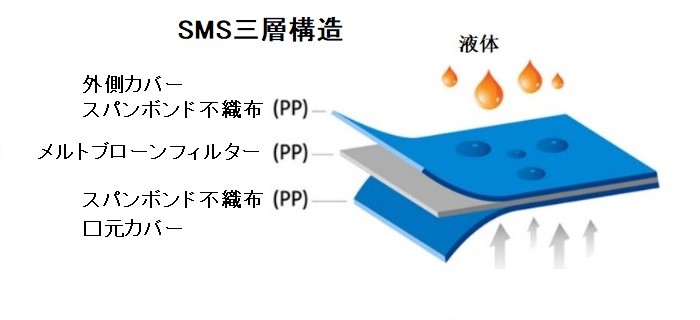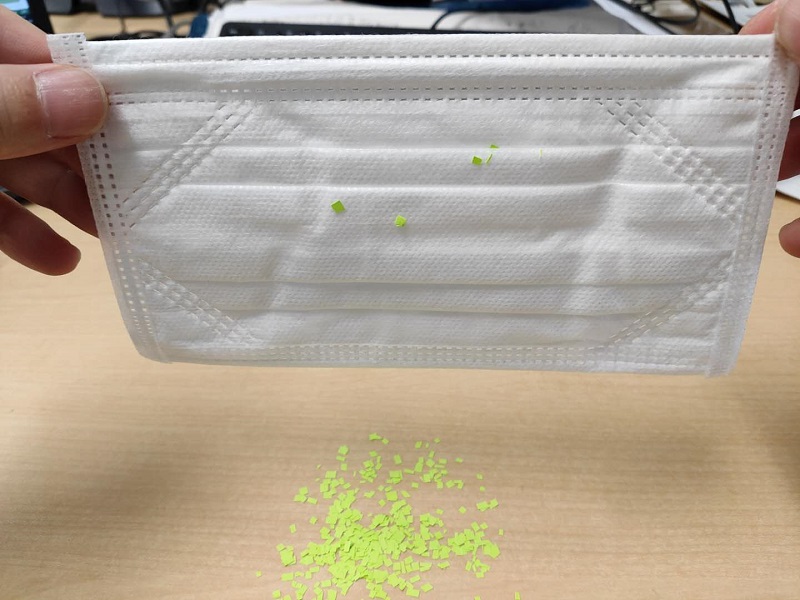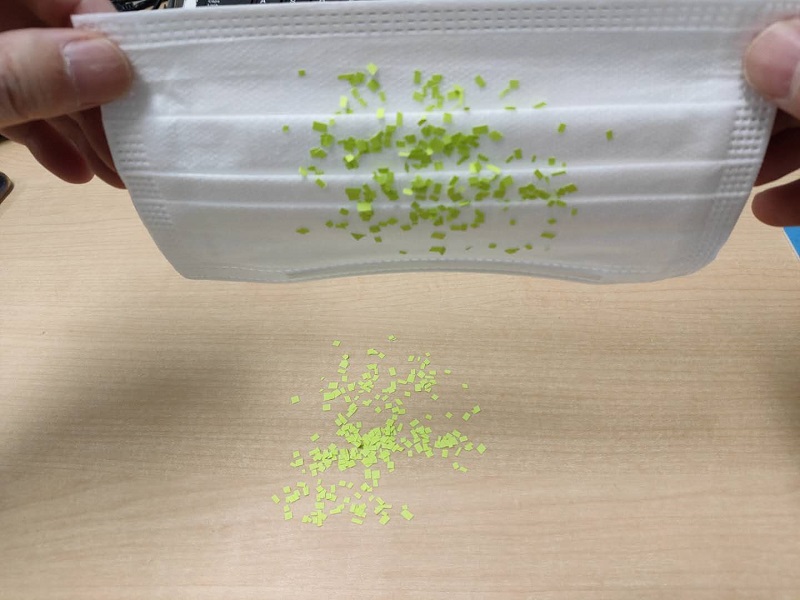The basic structure of the three-layer non-woven mask commonly seen today is called SMS. The structure is such that the spunbond nonwoven fabrics of the outer and mouth cover sandwich the meltblown nonwoven fabric filter. The cover is impermeable to water, and the filter filters out bacteria and viruses.

When magnified with an electron microscope, the hair on the left has a diameter of 73 μm, the spunbond diameter of the cover material to the right is 22 μm, and the meltblown nonwoven fabric filter further down has a diameter of 3 μm.

The name of meltblown nonwoven fabric is derived from melting (melt) PP material and blowing (blow) ultra-fine threads. As you can see in the micrograph, we stack 3 μm diameter threads to make a thin cloth and try to filter out viruses with a diameter of 0.1 μm that are 1/30th of the thread. In a filtration efficiency test using 0.075μm NaCl aerosol particles,20layerof gauze and1 layerThe experimental results of the meltblown filter are almost the same - >95%, but about 28% (if you go to the three dense spaces, you will have a little difficulty with ordinary gauze and cloth masks). Well, why don't we stack several sheets to achieve the 95% target? Theoretically it is possible, but actually stacking that many will make it difficult to breathe, and you will collapse from lack of oxygen before you get infected with the virus.

The problem was solved in 1995 by Peter Tsai, who was researching at the University of Tennessee in the United States. Using the property of static electricity to adsorb light objects, his research team developed a method of electret processing meltblown nonwoven fabrics. We succeeded in absorbing and filtering more than 95% of fine particles with static electricity by long-term electrification.
A charged mask cannot hold static electricity forever, so the charge gradually disappears, but in one experiment, even a charged mask stored for 5 years seems to have achieved the filtration standard value.
FAQ
- How do you know if a mask is electret treated?
There is an easy way. It is better to prepare a piece of paper about 2mm in size, place the mask on top of it, and lift it up so that it absorbs a lot of the paper.


- How long can one mask last?
Every time the mask is used, dust, bacteria, and viruses adhere to the electret-treated electrified filter, and the filter's electrostatic adsorption ability decreases along with moisture from the mouth. increase. That's why medical staff use it several times a day.
- Is it possible to reuse disposable masks?
Most manufacturers don't recommend it, but according to an experiment, a clean, short-term mask can be soaked in hot water at 60-80 degrees Celsius for about 30 minutes to kill the virus, and then dried naturally to remove static electricity. Filtration capacity remains the same. However, if you knead and wash it by hand, the fibers will be destroyed, and the ability of alcohol disinfection and hot water baths exceeding 80 degrees will decrease.
